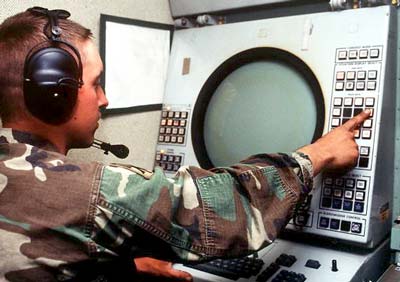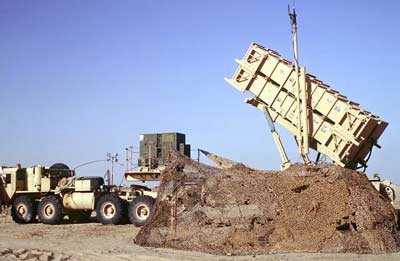
The Patriot missile system has a remarkable goal: It is designed to detect, target and then hit an incoming missile that may be no more than 10 to 20 feet (3 to 6 meters) long and is typically flying at three to five times the speed of sound. The upgraded Patriot system can also destroy incoming aircraft and cruise missiles.
The Patriot missile system has been in the news recently for two different reasons:
A Patriot missile, instead, depends on radar. The Patriot missile system uses its ground-based radar to find, identify and track the targets. An incoming missile could be 50 miles (80.5 kilometers) away when the Patriot's radar locks onto it. At that distance, the incoming missile would not even be visible to a human being, much less identifiable. It is even possible for the Patriot missile system to operate in a completely automatic mode with no human intervention at all (this may be what happened recently when a patriot missile system shot down a British aircraft). An incoming missile flying at Mach 5 is traveling approximately one mile every second. There just isn't a lot of time to react and respond once the missile is detected, making automatic detection and launching an important feature.
While the Stinger is a shoulder-launched weapon and the Sidewinder launches from aircraft, Patriot missiles are launched from Patriot missile batteries based on the ground. A typical battery has five components:

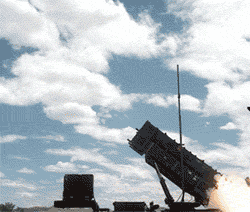
The PAC-2 missile:
Four PAC-2 missiles fit on a launcher.
The idea is for the PAC-2 to fly straight toward the incoming missile and then explode at the point of nearest approach. The explosion will either destroy the incoming missile with the fragments from the fragmentation bomb, or knock the incoming missile off course so it misses the target.
The PAC-3 missile is the same length as the PAC-2 but weighs only a third as much at 686 pounds (312 kg). It is only 10 inches (25 cm) in diameter. The smaller size means that 16 PAC-3 missiles can fit on a launcher. The fragmentation warhead weighs only 160 pounds (73 kg) in the PAC-3.
The idea behind a PAC-3 is for the missile to actually hit the incoming target and explode so that the incoming missile is completely destroyed. This feature makes it more effective against chemical and biological warheads because they are destroyed well away from the target.
The biggest difference between the PAC-2 and the PAC-3, and the thing that allows the PAC-3 to actually hit its target, is the fact that the PAC-3 has its own built-in radar transmitter and guidance computer. The operational differences between the PAC-2 and PAC-3 are discussed later in the article.
PAC-3 missiles currently cost two to three million dollars each.
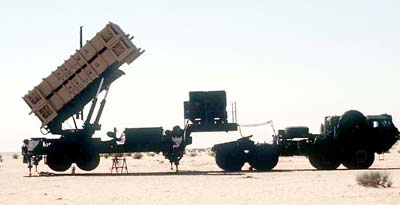
Each launcher is about the size of a tractor-trailer rig. A launcher can hold four PAC-2 missiles or 16 PAC-3 missiles. After firing its missiles, a re-supply truck with a crane pulls up next to the launcher to load it with new missiles.
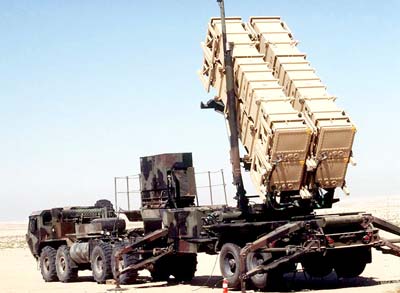
Each launcher has its own power supply to power the electronics and point the missiles, although a Patriot missile does not have to be aimed directly at the target when it launches.
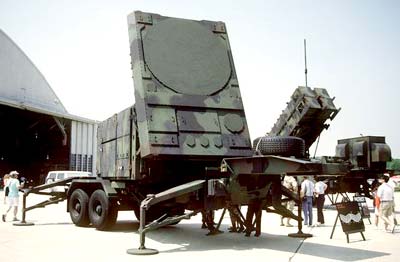
The traditional image of a radar antenna is the rotating, parabolic antenna seen on top of airport control towers and aircraft carriers. The Patriot system instead uses a phased array antenna. This antenna contains 5,000 phase-shifting elements that allow the antenna to send out multiple, narrow, precisely-aimed radar beams that scan the sky. With these beams, the Patriot's radar can track up to 100 potential targets as well as up to nine outbound Patriot missiles.
The radar antenna has a 63 mile (100 kilometer) range.
Inside the van there are two radar consoles. Operators can see the status of all of the targets that the system is currently tracking. Operators can let the system run in fully automatic mode, or they can intervene to select or deselect targets. There is also a communication station that allows the battery to communicate with other batteries or with the command center for the region.
